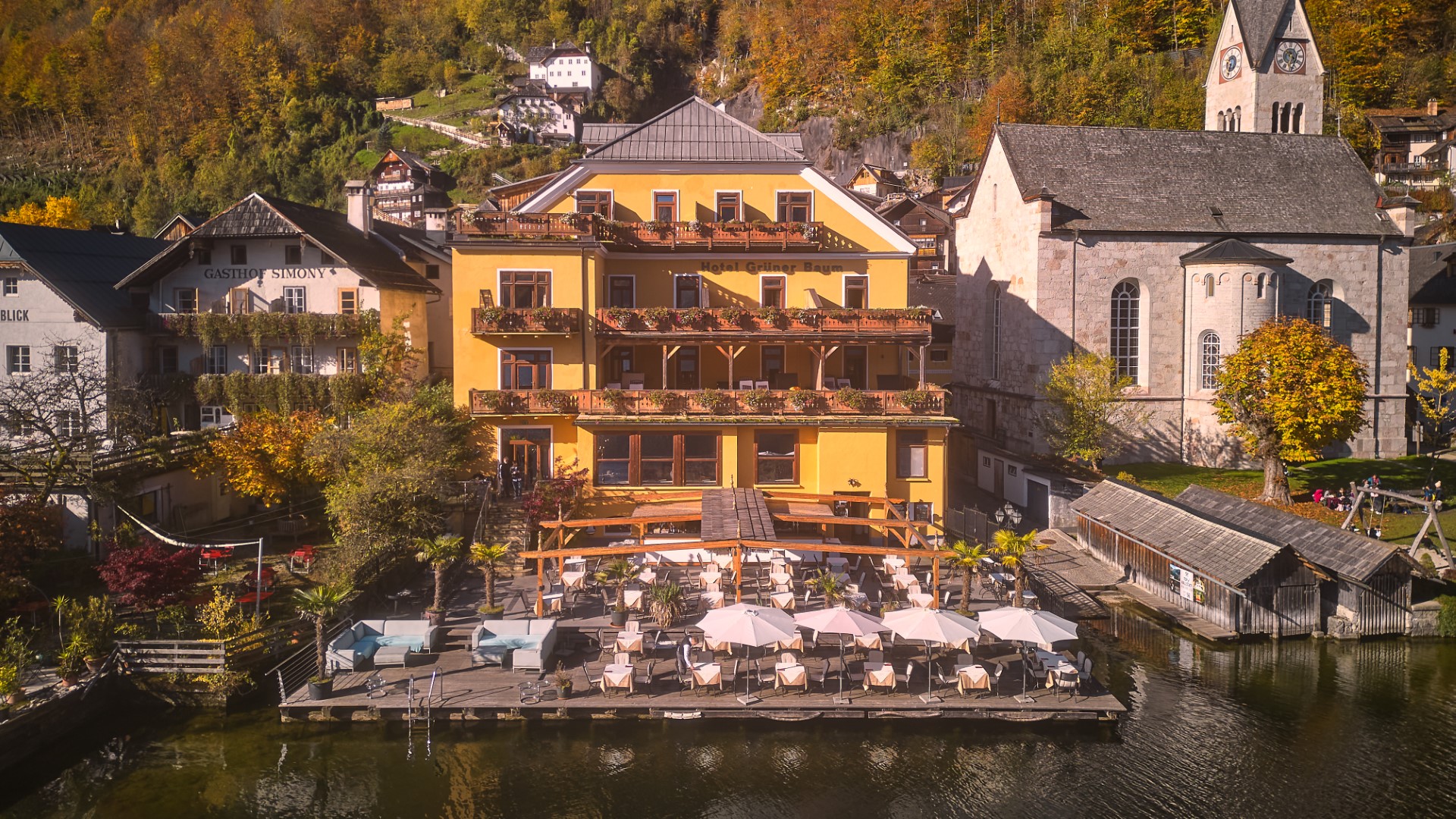Shipping has been in existence on Lake Hallstatt since 1862, and the transfer line between the Hallstatt market square and the train station has been in operation since 1881. Today the market square-train station line is the only ship connection on an Austrian lake which also operates throughout the winter months. The Lake Hallstatt shipping enterprise, owned by the Hemetsberger family since 1967, consists of a fleet of four ships. Enjoy the views of world-famous Hallstatt from the lake. It’s a unique experience that you will never forget!
Hallstatt Salt Mine Funicular
In only three minutes, guests glide calmly and safely up to the Hallstatt High Valley (838 m), location of the famous prehistoric burial ground. The panoramic views of the UNESCO Region of Dachstein and Lake Hallstatt are extraordinary. Whether to hike, stroll through the Hallstatt High Valley or simply enjoy the spectacular views, the Salzberg Mountain in Hallstatt is a gorgeous destination especially during good weather. Located directly at the mountain funicular station, guests will find the start of the ‘Soleleitung’ trail which follows the path of the world’s oldest pipeline.
Hallstatt Salt Mine
Salt was and still is one of the most important raw materials in Austria. This oft-cited “white gold” has not only prompted the names of the city of Salzburg and region of Salzkammergut, it has also strongly influenced nature, and the lives and culture of the inhabitants in the area since the era of the Celts. And even today alert visitors may still notice the vestiges of this mineral in many spots in Austria. The Austrian salt company “Salinen Austria” has one of the longest and nearly uninterrupted commercial histories in Europe.
Rudolf’s Tower
From the Rudolf’s Tower on the Salzberg Mountain in Hallstatt, visitors have a wonderful view of the World Heritage village of Hallstatt and the surrounding mountain landscape. Named for the first Habsburg ruler, the tower was erected between 1282 and 1284 by Rudolf’s son Duke Albrecht I of Austria as a defence tower for the purpose of protecting the shaft and buildings of the Hallstatt Salt Mine. Today the Rudolf’s Tower is home to a restaurant and café with a viewing terrace. The village of Hallstatt is a two minute walk from the mountain station of the Salt Mine Funicular.
Hallstatt Museum
The World Heritage Museum in Hallstatt embodies the motto ‘a life for white gold’. Within the impressive exhibitions, visitors will experience the history of the salt mining village from the beginning of human settlement through today. This journey through time reaches back 7000 years and leads through various epochs of Hallstatt’s history. The museum focuses on key moments such as the early Iron Age—also known as the Hallstatt Period—as well as other formative events such as the fire of 1759 which ultimately led to a new appearance for the entire village. In addition to the numerous original artifacts from the Hallstatt burial ground, the museum presents various spheres of daily life such as religion, daily culture and tourism set in vivid and enlightening scenes.
Catholic Parish Church
As far back as 1181, there was a small Romanesque church in Hallstatt. The mighty church tower from the 12th century remains as a present-day reminder of this original structure. During the late Gothic period, builders dared to extend the church over the steeply sloped cliff, and by 1505 the structure which we know today was completed. Shortly thereafter, the double-naved church was engulfed in severe religious wars and sporadically shifted between Catholicism and Protestantism. The church was favoured and supported by the salt merchants and the rich lords of the salt industry, in local commerce and at court. Since 1939 this gem has been solely maintained by the local parish, friends and visitors. In 2002 the Hallstatt catholic parish church was completely renovated.
The Bone House
A very special feature of Hallstatt is the famous charnel house—the Bone House—in the Romanesque lower level of the Gothic St. Michael’s chapel. This room serves as an interment chamber for exhumed bones. Due to a lack of adequate space in the Hallstatt cemetery, 1800 finely cleaned skulls have been carefully stacked on simple boards around the room. The skulls have been labelled with names and birth and death dates as well as decorated with various ornamentation. The Bone House can be found behind the catholic parish church on the mountain.
Dachstein Ice Caves
The ice palaces of Dachstein count as one of the greatest natural wonders of the Alps. People come from all over the world to see the underground ice landscape within the Dachstein Mountain. Mighty cave glaciers, icebergs and ice chapels are a welcomed contrast to the heat of summer days. On cool rainy days, the caves have been a safe refuge for both man and beast for thousands of years. Caves are ancient documents on which the changes of time are inscribed. Cave guides are prepared to illuminate the secrets of the earth’s history which have been decoded within the caves by scientists and explorers.






















